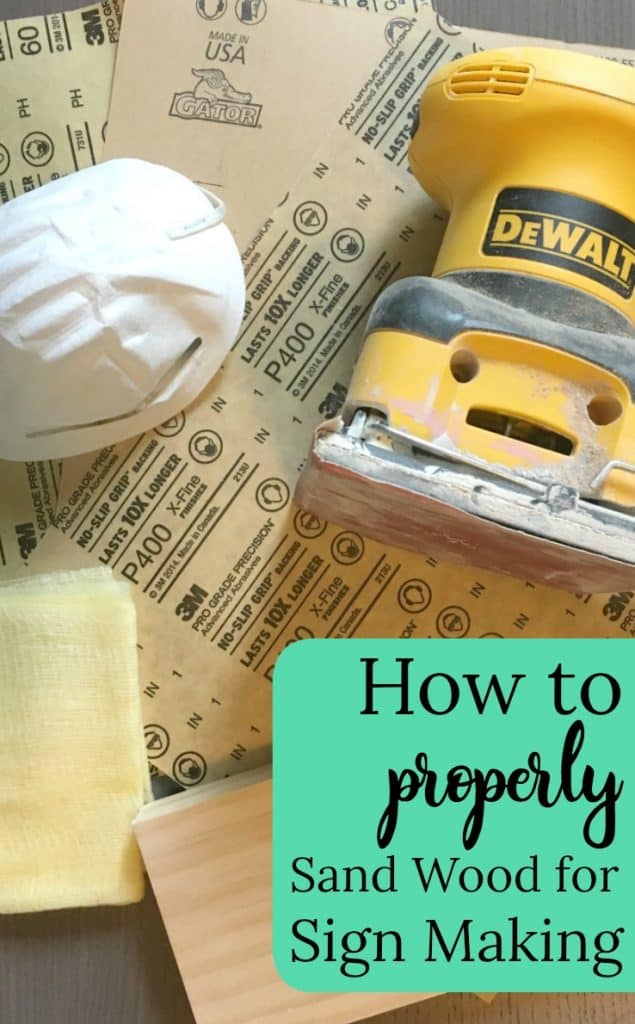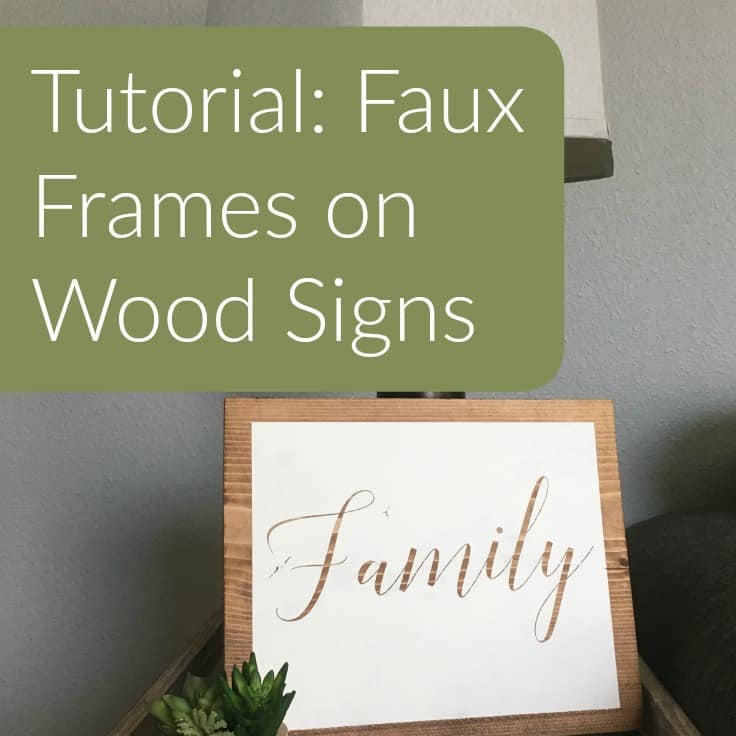How to Properly Sand Wood for Painted Wooden Signs
Affiliate Disclosure: As an Amazon Associate I earn from qualifying purchases. Additionally, I may get commissions for purchases made through other affiliate links in this post.
This post is a bit of a followup to a popular post on Cutting for Business: Why Does Paint Bleed when Using a Vinyl Stencil. I’ve had some readers read that post and email me stating that they are still experiencing bleeding – even after following my tips. Through a little detective work, I emailed several of those readers and found a common cause in every single case: they didn’t know how to properly sand the wood before painting or staining it. Today, let’s look at how to properly sand wood before making a wood sign with your Silhouette or Cricut cutting machine.
Before we start, let’s look at what you’ll need:
- A wood blank – Need tips to picking great wood? Head to this post.
- Sandpaper – You’ll need a couple of different grits of sandpaper. The grit refers to how coarse the paper is and is determined by the number of sand granules per square inch of paper. The lower the number, the coarser the paper; the higher the number, the more finer the sandpaper.
- A palm sander – I use (and love!) my DeWalt palm sander. You can buy it here, or read more about power tools in this blog post.
- Tack cloth – Tack cloth is used to clean up the particles of dust after sanding. Pick up a multi pack at this link.
- Safety goggles and a mask – Safety first! Protect your eyes, nose, and mouth from sawdust. Amazon has cheap goggles here and masks here.
How to Properly Sand Wood for Painted Wood Signs
- Determine which direction the grain runs on your wood blank. The grain simply refers to the pattern of the wood. You never want to sand against the grain.

- Starting with a medium coarseness sandpaper, sand in the direction of the wood grain until the surface is smooth to the touch. When making wood signs, I generally use 120 grit or 150 grit sandpaper. (The grit number is printed on the back of the sheet.) Be cautious to make sure that you apply even pressure. It doesn’t matter whether you are sanding by hand or using a palm sander.

- After your surface is smooth, sand it again with a higher grit sandpaper. This removes fine imperfections that you may not be able to see. For this step, I usually use 220 grit sandpaper. Again, be sure to use even pressure with your sandpaper or palm sander.

- When you’ve sanded the entire wood blank with your fine sandpaper, use a tack cloth to remove the dust. Keep the tack cloth folded. Use the exposed side to remove the dust from the wood blank. Once that side is full of dust, fold it over to a clean side, and so on. You should get many uses from a single tack cloth.

That’s it! Once the dust has been removed, your wood sign blank is ready for staining or painting.
Help out another crafter – save this post to Pinterest:

Since 2015, Christine Schinagl has been helping crafters start and run craft businesses through her blog, Cutting for Business. As a Silhouette and Cricut crafter herself, she has a unique take on what works and what doesn’t work in the craft business world. She also enjoys teaching other crafters how to create digital SVG designs, available through the Design with Me series.





